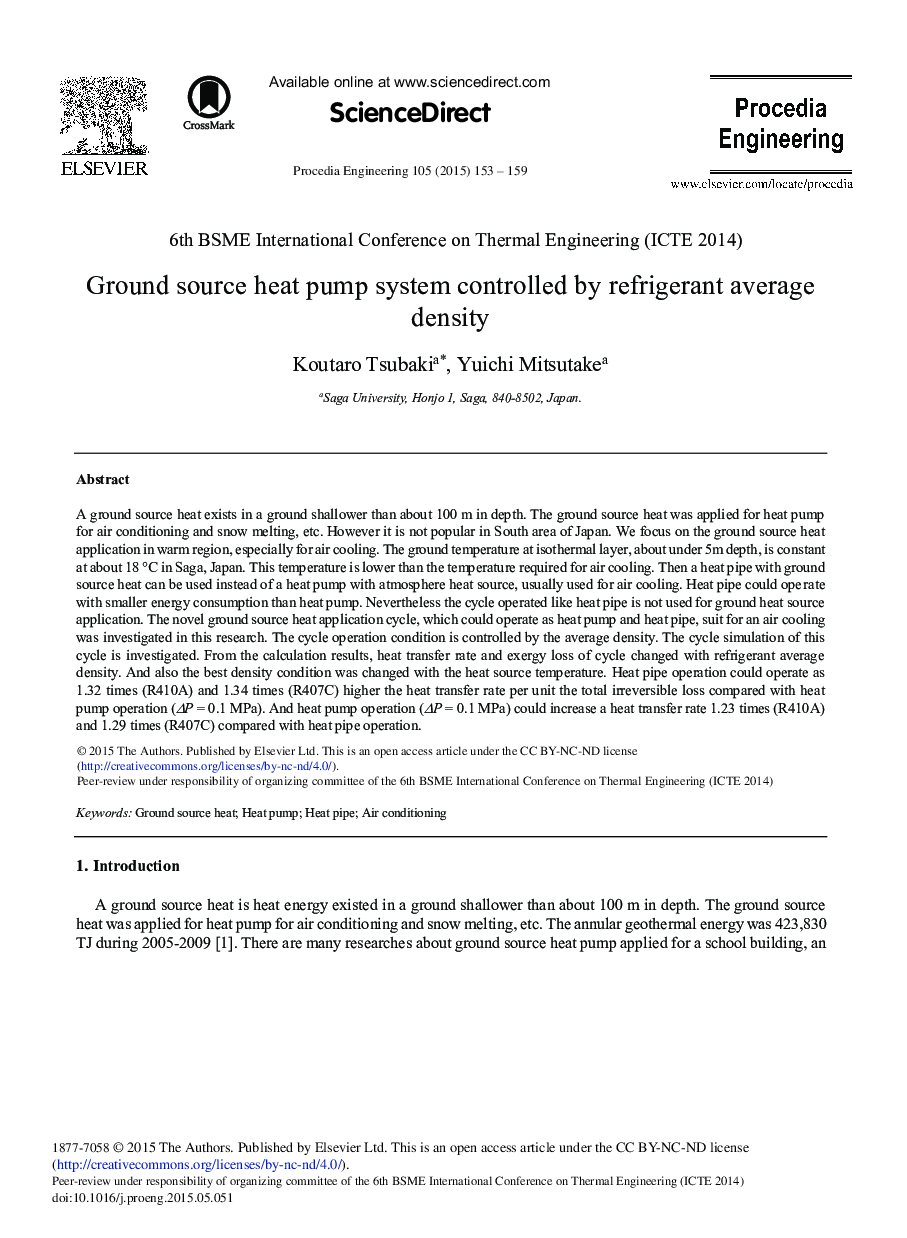| کد مقاله | کد نشریه | سال انتشار | مقاله انگلیسی | نسخه تمام متن |
|---|---|---|---|---|
| 856448 | 1470721 | 2015 | 7 صفحه PDF | دانلود رایگان |
A ground source heat exists in a ground shallower than about 100 m in depth. The ground source heat was applied for heat pump for air conditioning and snow melting, etc. However it is not popular in South area of Japan. We focus on the ground source heat application in warm region, especially for air cooling. The ground temperature at isothermal layer, about under 5 m depth, is constant at about 18 °C in Saga, Japan. This temperature is lower than the temperature required for air cooling. Then a heat pipe with ground source heat can be used instead of a heat pump with atmosphere heat source, usually used for air cooling. Heat pipe could operate with smaller energy consumption than heat pump. Nevertheless the cycle operated like heat pipe is not used for ground heat source application. The novel ground source heat application cycle, which could operate as heat pump and heat pipe, suit for an air cooling was investigated in this research. The cycle operation condition is controlled by the average density. The cycle simulation of this cycle is investigated. From the calculation results, heat transfer rate and exergy loss of cycle changed with refrigerant average density. And also the best density condition was changed with the heat source temperature. Heat pipe operation could operate as 1.32 times (R410A) and 1.34 times (R407 C) higher the heat transfer rate per unit the total irreversible loss compared with heat pump operation (ΔP = 0.1 MPa). And heat pump operation (ΔP = 0.1 MPa) could increase a heat transfer rate 1.23 times (R410A) and 1.29 times (R407 C) compared with heat pipe operation.
Journal: Procedia Engineering - Volume 105, 2015, Pages 153-159
